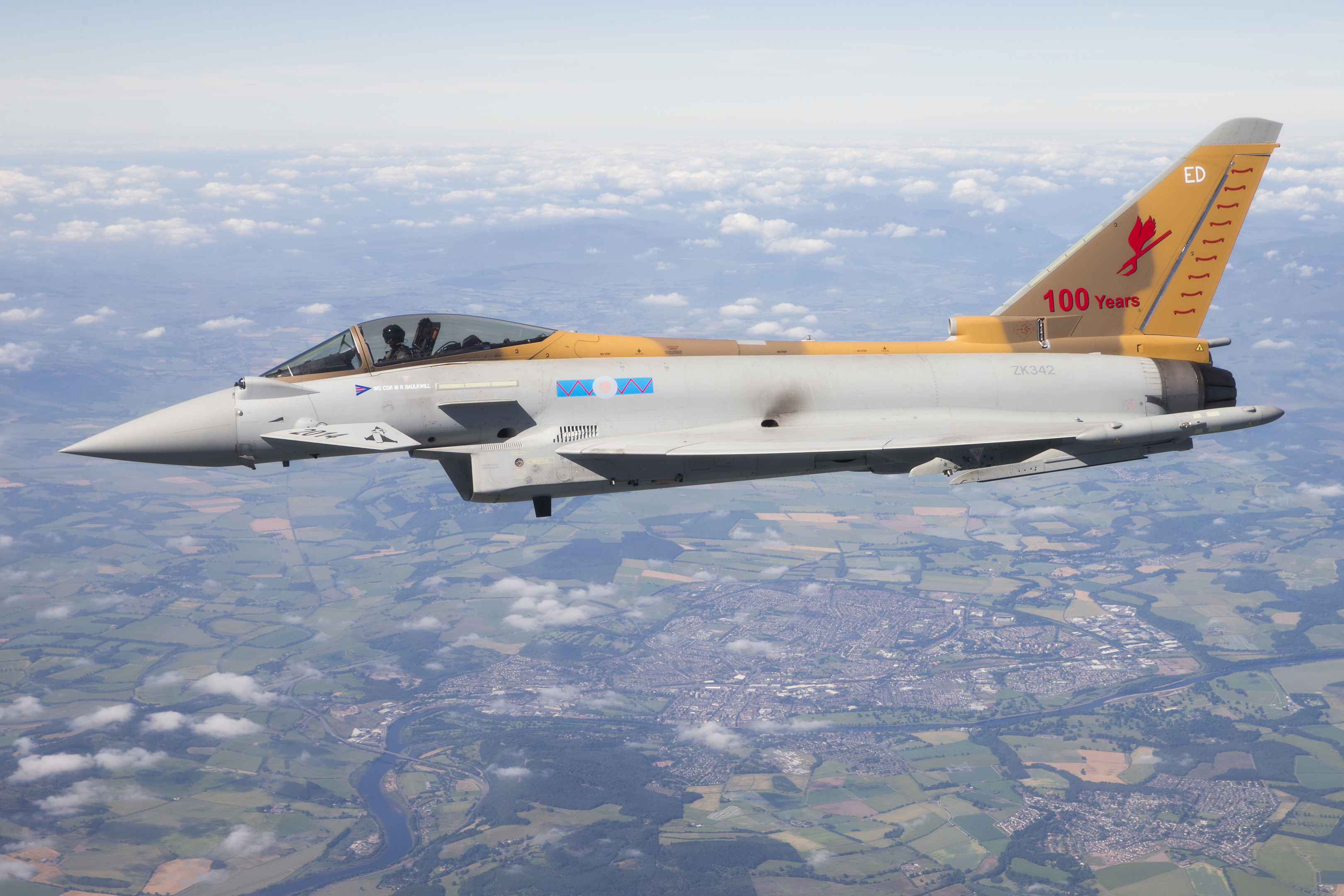The centenary of one of the RAF’s most historic regiments will be marked today.
Exactly 100 years ago to the day, on October 6, 1914, the Royal Flying Corps’ Number 6 Squadron made its first ever operational deployment.
The current squadron – now equipped with high-tech modern Typhoon jet fighters – is stationed at Lossiemouth, but it began life more modestly at Farnborough in January 1914.
At the beginning of World War I, only 2, 3, 4 and 5 squadrons were mobilised, with the majority of pilots and aircraft from 6 squadron transferred across the four under-strength units.
The first reinforcement to the Expeditionary Force of the Royal Flying Corps was sent to replace casualties in the squadrons in France.
At the beginning of October, a plan was drawn up to provide a squadron of aircraft to accompany a ground attack trying to save Antwerp under General Sir Henry Rawlinson.
So, on October 4, orders were issued for 6 Squadron to get ready at once to go overseas, and two days later the main party left Farnborough and embarked at Southampton along with the advance party for the crossing to Ostend.
Also on October 6, 12 aircraft – a mixture of BE2s, BE8s and Henri Farman biplanes – of No. 6 Squadron left for Dover.
Since 1918, the squadron has performed key roles in World War II, the Middle East, south-east Europe, and the Gulf.
Today, 6 Squadron holds the Quick Reaction Alert mission and are ready to deploy anywhere in the world at short notice.
The biplanes have been replaced the Eurofighter Typhoon FGR4, and the squadron is no longer limited to reconnaissance, but can operate in the air-to-air and air-to-ground roles.
Wing Commander Jim Walls has spoken of the pride that his current charges have for being able to represent a squadron with such a decorated past.
He said: “In our centenary year, we will continue to look back at the notable achievements of Number 6 Squadron over the last century of aviation with immense pride. We continually strive to match the standards that they have set and to be able to say, as they were, we too are always ready.”
